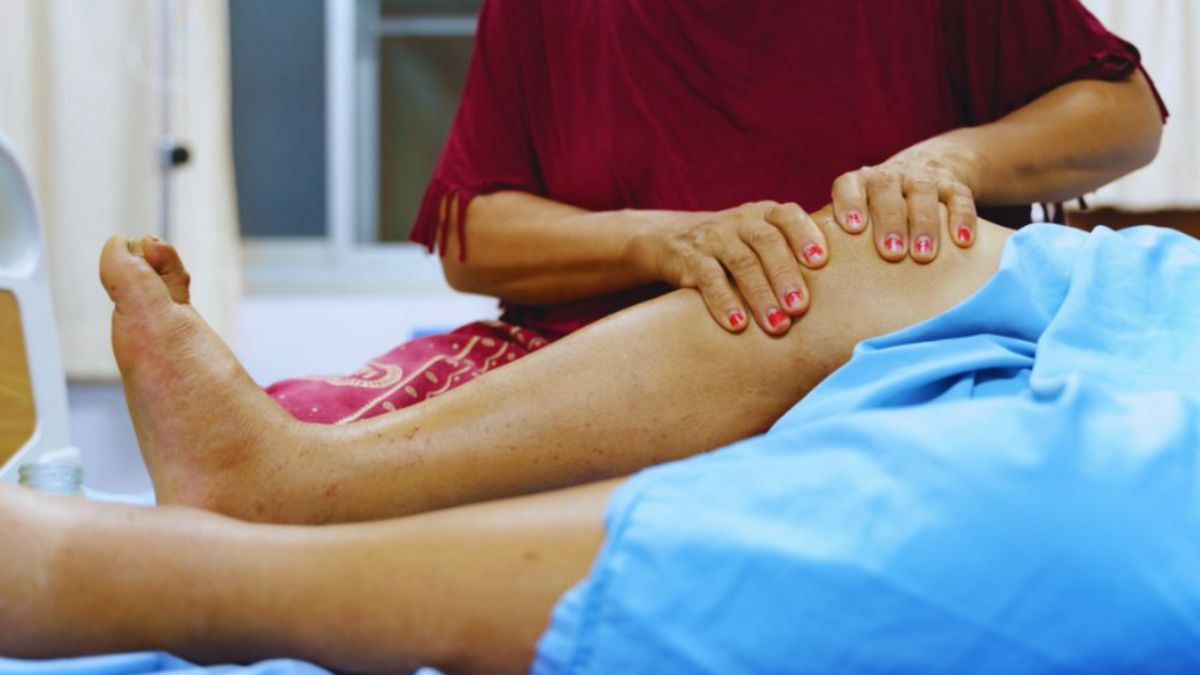What Is the Essential Role of Lymphedema Professionals?
The Essential Role of Lymphedema Professionals?
Living with ongoing swelling, tightness, or heaviness in your arms or legs can make daily movement difficult. If you’ve been diagnosed with lymphedema — or suspect you may have it — you may wonder who is qualified to help manage it long-term.
Table of Contents
ToggleThat’s where lymphedema professionals come in. These trained providers use proven techniques such as manual lymphatic drainage, compression therapy, and exercise-based rehabilitation to control swelling and improve mobility.

Midas Touch Lymphedema Institute offers holistic care that addresses more than just physical symptoms. Our team of certified professionals, including physical and occupational therapists, life coaches, and energy healing practitioners, provides personalized support through lymphedema therapy, yoga, and wellness programs to enhance your well-being at every stage of your journey.
What You Need to Know About Lymphedema Professionals
The Role of Lymphedema Professionals
Who Are Lymphedema Professionals?
Lymphedema professionals diagnose, treat, and manage chronic swelling from lymph fluid buildup. With backgrounds in physical therapy, occupational therapy, or nursing, they create personalized treatment plans to improve mobility, reduce swelling, and support daily activities.
Their Role in Managing Lymphedema
Lymphedema professionals assess the severity of swelling, develop personalized treatment plans, and provide therapy to improve mobility and reduce discomfort. They offer manual lymphatic drainage, compression therapy, and exercise programs to promote lymph flow. Through tailored care and self-management techniques, they help patients maintain mobility, reduce swelling, and enhance overall well-being.
Importance of Their Work
Lymphedema professionals help patients manage a lifelong condition that can affect daily activities. With proper care, they reduce pain, improve mobility, and support overall well-being. Their guidance on treatment and self-care empowers patients to stay active, prevent complications, and enhance their quality of life.
Training and Qualifications of Lymphedema Professionals

Education Requirements
Lymphedema professionals typically have a background in physical therapy, occupational therapy, or nursing. They earn a relevant degree, such as a Doctor of Physical Therapy or a nursing degree, and undergo specialized training in anatomy, physiology, and the lymphatic system. To become certified lymphedema therapists (CLTs), they complete additional training and obtain certification from organizations like the Lymphology Association of North America (LANA). This equips them to manage swelling and support mobility through targeted treatment.
Necessary Certifications
To become a certified lymphedema therapist, professionals undergo specialized training and earn certification from recognized organizations like the Lymphology Association of North America (LANA). Their training includes coursework in anatomy, physiology, and the lymphatic system, as well as hands-on practice in Complete Decongestive Therapy (CDT). These certifications equip them with the knowledge and techniques to manage lymphedema and support patient care effectively.
Continuing Education and Professional Development
Lymphedema professionals continuously enhance their skills by staying informed about the latest treatment techniques and research. Through ongoing education, workshops, and conferences, they refine their approaches to provide effective care and improve patient outcomes. Many also pursue advanced certifications and research opportunities to offer well-rounded, up-to-date treatment strategies.
Treatment Approaches by Lymphedema Professionals
Assessment and Diagnosis
Lymphedema professionals begin with a thorough evaluation to assess the condition’s severity. They review medical history, conduct a physical exam, and measure limb volume to identify risk factors like past surgeries, infections, or radiation therapy. This assessment guides them in creating personalized treatment plans for effective management.
Treatment Plans
Lymphedema professionals create personalized treatment plans to reduce swelling, improve lymphatic function, and prevent complications. These plans include manual lymphatic drainage, compression therapy, exercise, and skincare. As patients improve, treatments are adjusted to support long-term management and reduce the risk of recurrence.
Types of Therapies Used
Lymphedema professionals apply evidence-based therapies to manage symptoms effectively:
- Manual Lymphatic Drainage (MLD): A gentle, skin-stretching technique that promotes lymph flow and reduces fluid buildup.
- Compression Therapy: Uses bandages, garments, or pneumatic devices to control swelling.
- Exercise Therapy: Incorporates targeted movements and stretches to improve lymphatic circulation and muscle function.
- Complete Decongestive Therapy (CDT): Includes manual lymphatic drainage, compression therapy, and skincare—key components of Complete Decongestive Therapy (CDT), which is the gold standard for managing lymphedema.
Choosing a Lymphedema Professional
Factors to Consider
When choosing a lymphedema professional, look for certification, experience, and a treatment approach that suits your needs. Training in Complete Decongestive Therapy (CDT) and experience with your condition are essential. Also, consider location, availability, and insurance coverage. A provider who tailors care and supports long-term management can improve your treatment experience.
Key Questions to Ask a Lymphedema Professional
Before choosing a lymphedema professional, ask about their certification, experience, and treatment methods. Ask about the therapies they use, expected outcomes, and session frequency. Understanding their approach to long-term management and whether they collaborate with other healthcare providers can help you make an informed decision. Also, ask about insurance acceptance and costs.
Resources for Finding a Professional
Explore organizations like the Lymphology Association of North America (LANA) or the National Lymphedema Network (NLN) for certified professionals. Hospitals, rehabilitation centers, and lymphedema clinics also provide access to trained providers. Online directories, physician referrals, and patient support groups can help you connect with experienced professionals nearby.
Frequently Asked Questions
Which Doctor Should You See for Lymphedema Treatment?
You should see a primary doctor or a vascular specialist for a lymphedema diagnosis. Depending on your needs, they may refer you to certified lymphedema therapists, physical or occupational therapists, or dermatologists for skin care. Lymphedema treatment involves a team approach, with therapists managing swelling and mobility while doctors focus on diagnosis and overall care. This collaborative approach supports long-term symptom management and circulation.
What Is the Most Effective Treatment for Managing Lymphedema?
Complete decongestive therapy (CDT) is the most effective treatment for managing lymphedema. It combines manual lymphatic drainage (MLD), compression therapy, targeted exercises, and skin care to reduce swelling, improve circulation, and enhance mobility. In advanced cases, surgical procedures like lymphovenous bypass or vascularized lymph node transfer can support lymphatic function. Consistent management through compression and healthy lifestyle habits play a key role in long-term symptom control.
Can Lymphedema Be Cured Completely?
While there’s no complete cure for lymphedema, proper management can significantly reduce symptoms and improve quality of life. With consistent treatment and self-care, many patients achieve long-term control of their condition.
Begin Your Path to Wellness

Reclaim your health and well-being with Midas Touch Lymphedema. Our team offers compassionate care through lymphedema therapy, life coaching, yoga, and energy healing. Take the first step toward a healthier, more balanced life today.
Midas Touch Lymphedema Institute
Life Coaching
Services
Areas We Serve
Midas Touch Lymphedema Institute

